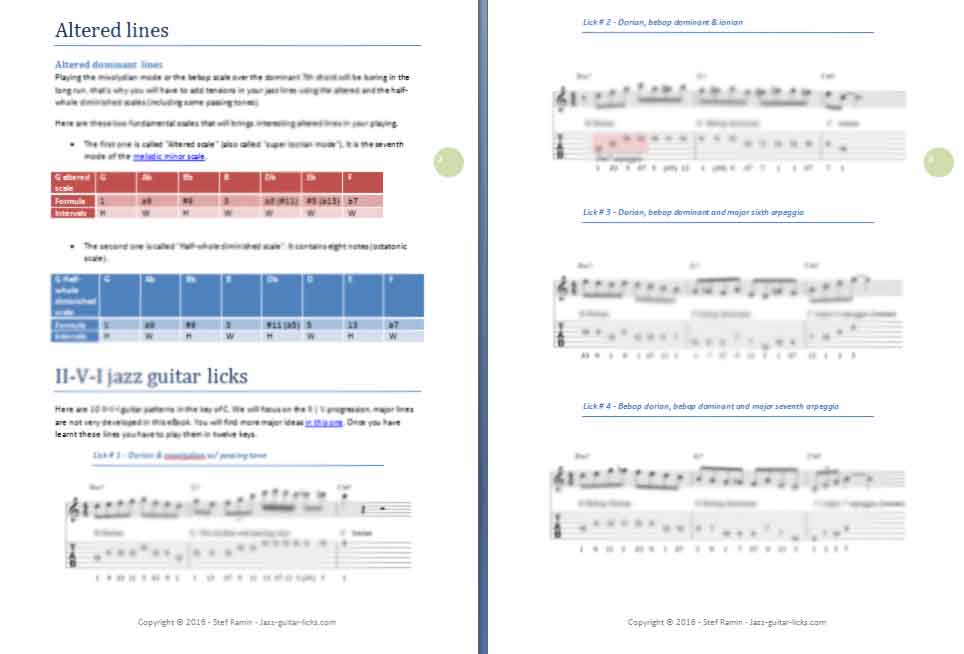Bebop Licks Guitar Pdf Free
Bebop Licks - Example Bebop Lines To Learn & Use In Your Own Playing. Bebop licks for guitar, presented in notation and TAB. Download Your FREE 84-Page PDF.
The dominant bebop scale is the most popular of the bebop scales, it is an octatonic scale (it contains eight notes). It is widely used in bebop music. This scale has the same notes as the including a major seventh, chromatic passing tone between the minor seventh ( b7) and the root (1). It is commonly played over dominant chords. For example, in the key of C major, G is the dominant, that means this scale can be played both over G7 and over Dm7 the second chord of the C major scale, very helpfull when you have to improvise over a II-V sequence. G Dominant bebop scale G A B C D E F F# Formula 1 2 3 4 5 6 b7 7 Intervals W W H W W H H H. This is the first dominant bebop fretboard guitar diagram and fingerings (suggested). To hear this scale correctly, it is recommended to play these patterns by starting with the lowest root (R) and to play them by ascending and descending movement.

Cd Cracks here. For example, to play the A dominant bebop scale starting on the lower root you must put your second finger on the sixth string at the fifth fret. The fingering diagram on the right indicates that you have to put your third finger on the root, this is in case you would start from the minor seventh ( b7). Playing the corresponding chord after or before these patterns is a nice way to bring scales and chords together. Be sure to play these patterns in twelve keys. This second pattern has its roots (R) on the fifth and the third string. For example, to play the D dominant bebop scale using these diagrams starting with the lowest root (R) you must put your first finger on the fifth string at the fifth fret. Like the previous pattern, the fingering diagram on the right indicates that you have to put your third finger on the root, this is in case you would start from the minor seventh ( b7).
Dod 512 Reverb Effects Processor Manual Treadmill more. Once again, be sure to play this pattern in twelve keys, ascending and descending. Here are some and a to practice.